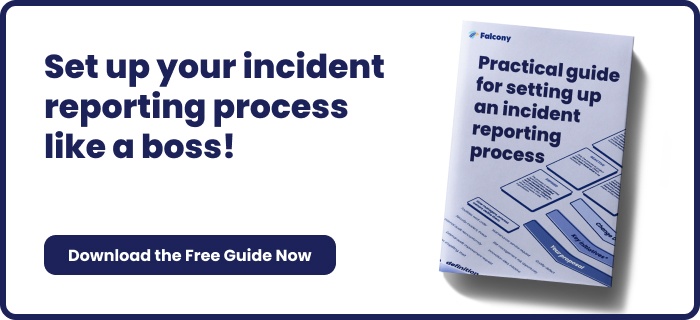Why “Knowing Your Enemy” Matters In Auditing
“If you know your enemy and know yourself, you need not fear the result of a hundred battles.” Sun Tzu’s The Art of War describes the knowledge and understanding of the enemy as an advantage. One must interrogate the strengths and weaknesses of their opposition so they can be strong challengers.
The same sentiment exists in auditing procedures. Safety auditing is meant to promote compliance and workplace safety. What better way is there to achieve this and support the aims of your audits than to evaluate the strengths and flaws of your existing environment?
This blog will explain how incident and observation reports help you “know your enemy”. It will also outline a strategy you can use to analyse past incidents and observations for auditing.
The Importance Of Observation & Incident Reporting For Audits
Observation and incident reporting can be seen as something that informs auditing. Knowing what kind of events have occurred in the past helps you focus your auditing. Based on historical data, you gain insight into what potential causes, issues, conditions, etc. you should look for during your audit.
When you don’t know what you are looking for, the search may become very difficult and time-consuming. There is a greater chance of missing vital safety factors that result in incidents. Conversely, if you know exactly what you are looking for, you typically know the best places to look for it and what indicators to keep an eye out for. This gives you a strong starting point to identify and tackle safety concerns.
What is important to keep top of mind, however, is that you get a starting point - not the whole picture. You must still be thorough so you don’t overlook factors that don’t come up in your historical evaluation.
So, if you are questioning whether you should start with reporting or auditing, then the answer is reporting. Observation and incident reports contribute vital information to your auditing.
How To Analyse Past Events For Audits
A great way to approach your analysis of past occurrences is to use an Observation Categorisation table. Here are a few points that help you sort through different incidents or observations and identify important factors:
- Incident category or observation type
- Change drivers
- Causes
- Related risks
- Related functions
- Data capture methods
- Relevant stakeholders
With this list, you can enrich your audits with detail and gain an understanding of various factors surrounding a potential safety issue. This includes learning how that safety element functions (i.e. is it equipment or space, etc), which stakeholders may be most affected by it, what data recording methods are in place to monitor it, and more.
The resulting outcome of this analysis is that it should support you in designing a clear plan. This plan will alter processes, responsibilities, and requirements to address unsafe conditions and decrease incidents.
Final thoughts
There can be no successful or thorough auditing without analysis and inspection. All audits must be approached with as much objectivity as possible, as an opportunity for functional criticism. Including past incident and observation reporting analysis adds an additional layer of insight that can guide you during audits. The aim is to master the art of safety by learning from history.
If you're looking for a platform to collect more data to monitor your organisation's reporting practices, Falcony | Observe have you covered. You can find more information on our website or test out our 30-day free trial:
We are building the world's first operational involvement platform. Our mission is to make the process of finding, sharing, fixing and learning from issues and observations as easy as thinking about them and as rewarding as being remembered for them.
By doing this, we are making work more meaningful for all parties involved.
More information at falcony.io.

Related posts
Addressing Network Security in Security Audits: Top Considerations
Network security is a critical aspect of any organization's overall security posture. As technology...
The Impact of Security Audits on Business Continuity and Disaster Recovery Plans
Business continuity and disaster recovery planning are critical for organizations to ensure...
8 Types Of Audits For Retailers To Improve Operations
Audits are often a source of anxiety for many people, but a retail audit should not be one for...





